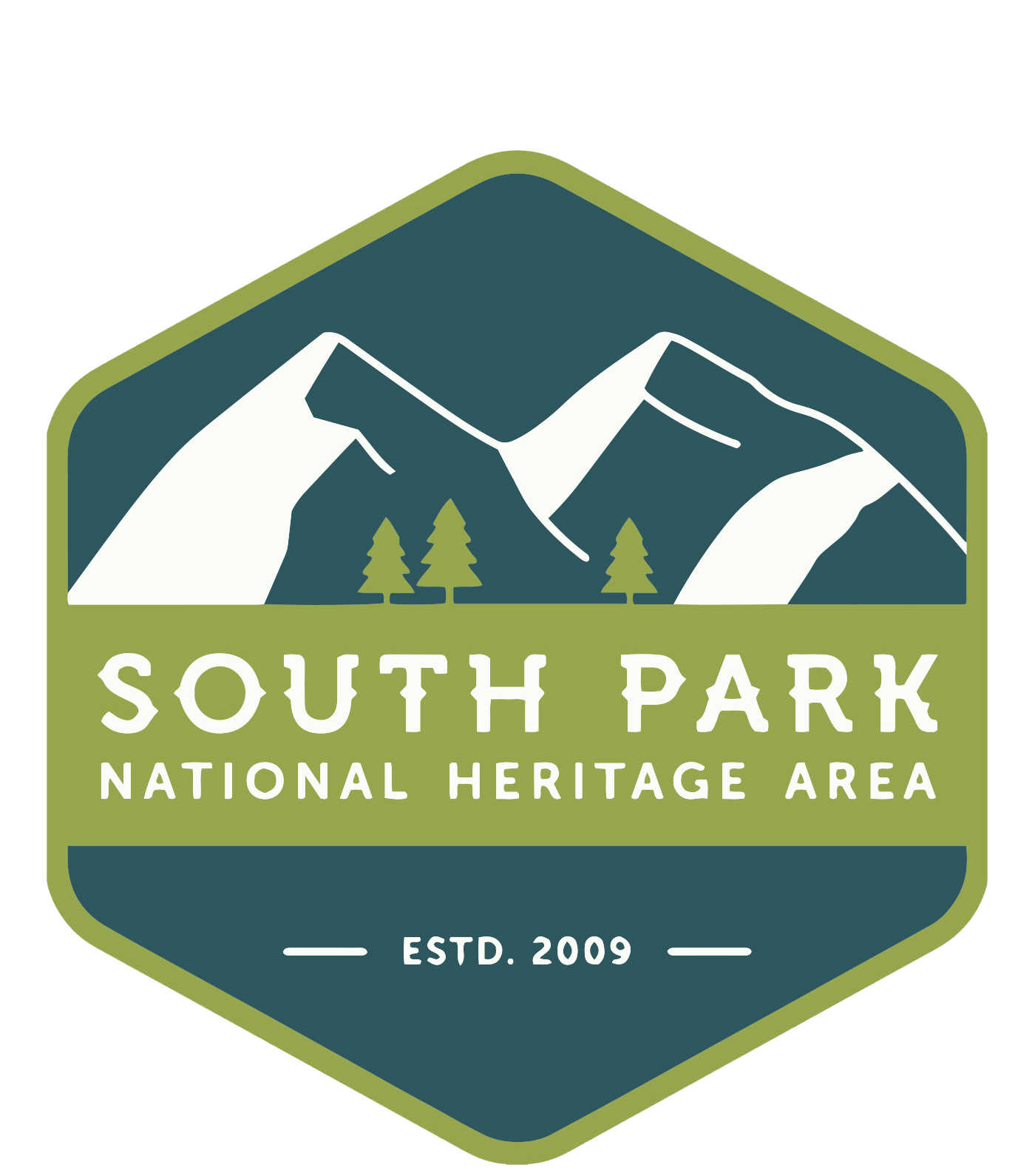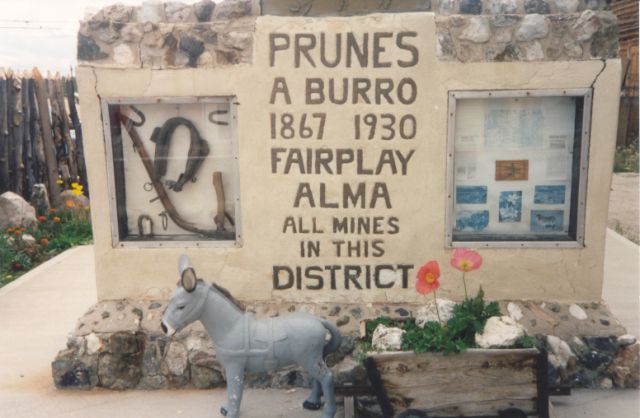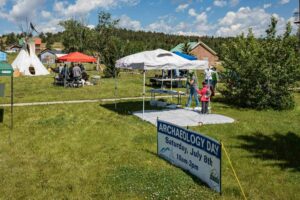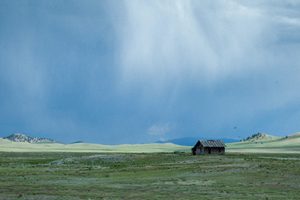If you ever stop to walk through Colorado’s South Park, also known as the Town of Fairplay, chances are you might stumble upon a small monument adorned with mining tools, ore samples and a collar that reads, “Prunes A Burro, 1867-1930, Fairplay, Alma, All Mines in This District.”
Burros have been prevalent in Park County ever since miners needed help with carrying gold ore. Burros were used to carrying anything really and could be trusted to navigate narrow trails without dropping valuable loads. Before freight wagons could navigate these trails, burros carried millions of dollars worth of ore out of the Colorado mountains. Naturally, many of the miners bonded with these animals, but one special bond, in particular, stands out.
Prunes has become a Park County legend, who first went to work in the Fairplay mines in around 1867. It’s been said that he had a long recognizable face and was seen at almost every mine during that time as he helped his owner carry whatever he needed. The last mine he was said to work at was the Hocking Mine in Mosquito Gulch.
Eventually, Prunes would come to be owned by a man named Rupert Sherwood, both of whom would spend lots of time together navigating the mines of Park County. As Prunes worked in the mines, he became a sort of miners pet and was trusted to move lots of ore being one of the top jackasses. As Prunes aged, Rupe set him free to roam and Prunes spent his final years in Alma receiving food from residents who eagerly gave it to him.
Prunes and Crew
Jack, Son of Prunes
Kenneth Jessen, a Colorado History columnist, documents well Prune’s life after leaving the mines.
“Residents eagerly gave the old jack food. Flapjacks fried in sowbelly grease made old Prunes hee-haw with delight. As the animal approached his 60s, his health began to fail. An examination of his mouth revealed that Prunes was losing his teeth along with his ability to eat.
A blizzard struck Alma in 1930, and the snow drifted deep. The temperature plunged below zero, and Prunes took refuge in an old shed. During the blizzard, the door blew shut, and a snowdrift prevented the old burro from pushing the door open.
Residents noticed that the burro was not making his usual rounds. After searching, they found Prunes half-starved in the shed, weak in the legs and unable to walk. He was showered with food and affection, but he did not recover from his exposure to the blizzard.
The miners met in May 1930 in Alma to decide what to do about the suffering animal. It was a difficult decision, and the miners elected to put an end to the suffering of their little long-eared friend. Prunes was shot as some of the old-timers, including Sherwood, wept. His little gray carcass was discarded in a local garbage dump.
A Fairplay cafe owner, with the help of other willing admirers, dug a grave on Fairplay’s main street, and here they deposited the remains of Prunes.
Over the grave, the miners in the area erected the unique cement monument studded with ore samples from the mines Prunes had worked. Never before had an animal been so honored by a Colorado mining town.
A year later on Aug. 23, 1931, at the age of 82, Rupe Sherwood died in the Fairplay hospital.
On his deathbed, he realized he was on his last trail and asked to be cremated. He requested that his ashes buried behind the monument under which the bones of his faithful burro were buried. The funeral was attended by about 500 people. A bronze plaque was added to the top of the monument.”
Prunes Monument
Burro Race
Burros still play a huge part in the community today and inspired the local event, Burro Days, which is celebrating its 72nd anniversary this year and attracts thousands! Find out more about this event on BurroDays.org!
You can find the monument of Prunes in downtown Fairplay near the Hand Hotel.
Bibliography
Park County Local History Archives (PCLHA). “Burros.” Photo Directory, PCLHA, https://www.parkcoarchives.org/photo-directory/nggallery/transportation-and-tools/burros
Balough, Linda. “The history of the burros of Fairplay.” News, Summit Daily, 2005, https://www.summitdaily.com/news/the-history-of-the-burros-of-fairplay/
Jessen, Kenneth. “Burro Named Prunes buried on stress in Fairplay.” Opinion, Reporter Herald, 2017, https://www.reporterherald.com/2017/01/27/burro-named-prunes-buried-on-street-in-fairplay/
“Fairplay burro race remnant of Old West mining tradition.” Things to Do, Denver Post, 2005, https://www.denverpost.com/2005/05/05/fairplay-burro-race-remnant-of-old-west-mining-tradition/




